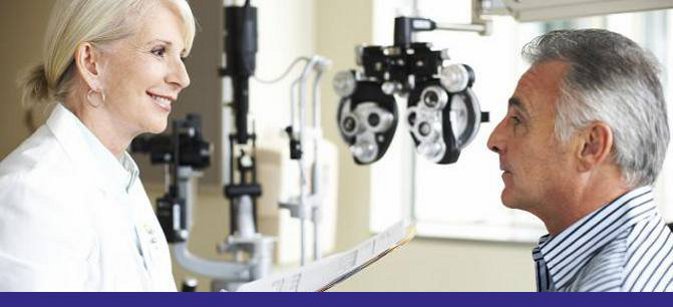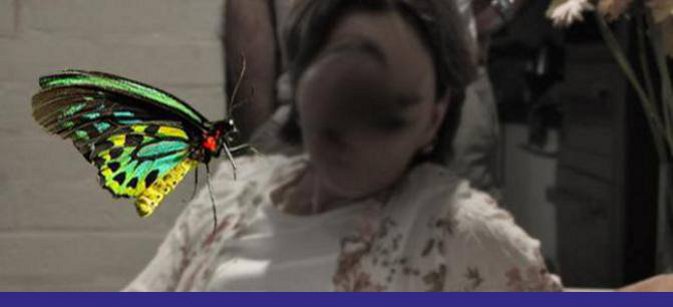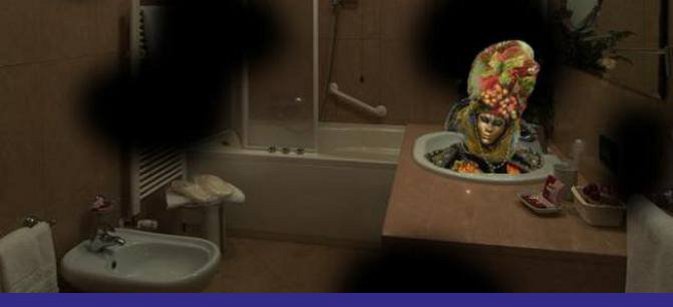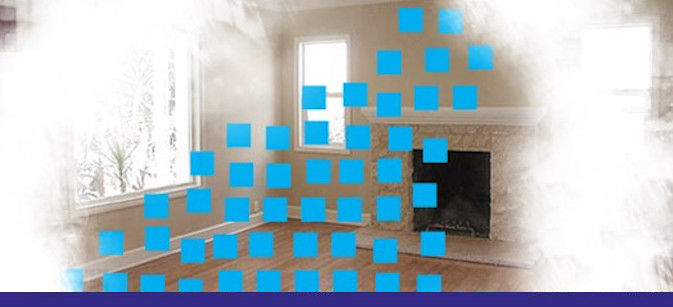
There are two principal ways of contracting Charles Bonnet syndrome:
- The most common is as a result of a wide range of eye diseases.
- Less common is a consequence of other clinical conditions or various eye procedures.
Clinical conditions such as stroke and brain tumour can trigger CBS when they affect the visual regions of the brain. A complication of Multiple Sclerosis and various eye procedures can also elicit CBS when they disrupt a region of the visual pathway.
The CBS Foundation believes that everyone needs to be forearmed and forewarned that CBS may become an unexpected consequence of these types of conditions or procedures.
CBS & Stroke
When a stroke occurs in the visual regions of the brain, there is an increased chance of visual disturbances including CBS.
There are two forms of stroke, which are also known as 'brain attacks'. The most common form is whereby there is an interruption to blood flow in a specific region of the brain (infarct). The less common form is where there is a rupturing of a brain blood vessel. Some effects of a stroke are widely known such as partial to total paralysis to one side of the body. Less well known is that in ~20% of cases of stroke it leads to various visual or perceptual disturbances.
This includes:
- visual field defects
- visual neglect (neglecting one side of space)
- impaired reading ability (alexia)
- impaired ability to recognise visual objects (visual agnosia)
- impaired ability to recognise colours (achromatopsia) or faces (prosopagnosia)
- visual hallucinations/phantom images/CBS.
Unlike most cases of CBS due to eye disease, in many instances of stroke-induced CBS, the affected person retains central vision (visual acuity) even though they may well experience some form of visual field loss.
Please note that:
- the effects of a stroke can be incredibly wide ranging and the above is just a small selection.
- CBS is a diagnosis of exclusion. Therefore, one must first exclude other possibilities including: Parkinson's disease, dementia, epilepsy, delirium, psychosis, drug and alcohol withdrawal, side effect of prescribed medication.
Reference: Ashwin et al (2007). Complex visual hallucinations (Charles Bonnet syndrome) in the hemianopic visual field following occipital infarction. Journal of the Neurological Sciences, 263, 184-186.
CBS & Brain tumour/surgery
CBS can occur from damage anywhere along the visual system. This begins from the eye ball, through the central visual pathway and to the visual regions of the brain. Brain tumours and aneurysms (ballooning of a brain blood vessel) have been known to result in vision loss and sometimes, CBS.
Furthermore, neurosurgical procedures (ie. brain surgery) to remove a tumour or aneurysm have also been known to trigger CBS. Interestingly, the CBS phantom images seem to typically occur in the regions where visual field loss has occurred.
Reference: Freiman et al (2004). Complex visual hallucinations (Charles Bonnet syndrome) in visual field defects following cerebral surgery. Journal of Neurosurgery, 101, 844-853.
CBS & Multiple Sclerosis
It has been reported that over 50% of people living with Multiple Sclerosis (MS) will experience at least one visual disturbance. A major cause of visual disturbance in MS is optic neuritis (swelling of the optic nerve). The range of visual disturbances include blurred or decreased vision, dilution of perceived colour and visual field loss. What is less well known is that visual disturbances experienced by those living with MS can also extend to CBS.
Optic neuritis is a common complication of MS and can lead to acute vision loss. It has often been suggested that CBS is more likely to occur as a result of sudden vision loss (eg. the 'wet' form of macular degeneration) and therefore it need not be surprising that an instance of optic neuritis in someone living with MS might become more susceptible to CBS.
There is very little literature when it comes to descriptions of visual hallucinations/phantom imagery in MS patients. Rather than this demonstrating the rarity of such visual phenomena, it may well be more a function of three factors:
- Research neglect
- Clinical neglect (many physicians are unaware of, or failing to screen for, CBS)
- Patient silence (patient reluctance to disclose their unusual visual experiences)
NB: Please note that vision loss due to optic neuritis in MS patients can be a temporary situation. Medical treatment often leads to a restoration of vision and the resolution of CBS.
Reference: Komeima et al (2005). Charles Bonnet Syndrome Associated with a First Attack of Multiple Sclerosis. Japanese Journal of Ophthalmology, 49, 533-534.
CBS & Ophthalmic (eye) procedures
This is perhaps the least known area of CBS risk.
While it is understood that various eye diseases can lead to CBS, it is not well known that CBS can also be triggered by certain eye procedures.
The range of eye procedures includes:
- Avastin treatment for the 'wet' form of macular degeneration
- Macular hole surgery
- Laser Peripheral Iridotomy (LPI) for (angle-closure) glaucoma
- Alphagan eye drops for glaucoma
- Eye removal (enucleation) and even
- Simple eye patching.
Avastin treatments are often successfully performed without incident but CBS can be an unexpected consequence of the procedure. In patients who received the Avastin (injection) treatment and CBS ensued, their symptoms began within hours to days of the treatment. The vast majority of them had experienced no CBS prior to the procedure. In one instance where a patient had experienced CBS prior to the injection, it was found that after the Avastin treatment their CBS symptoms increased in frequency.
In cases of narrow-angle or angle-closure glaucoma, often LPI is employed. LPI essentially involves a laser beam creating a hole at the base of the iris to improve fluid drainage. It is thereby hoped that this will lead to a lowering of eye pressure.
Eye patching is often a routine medical procedure used after various forms of (eye) surgery and also in emergency departments. There are many reported instances of CBS beginning suddenly after patching of the eye. Often, once the eye patch is removed, the CBS clears up within a couple of days.
The principal concern is that patients are not being forewarned that CBS is a possible side-effect of these types of procedures. The Foundation believes that patients have the right to be forewarned that complications such as CBS can arise from such recommended procedures. In the lead up to such eye procedures, pre-warning of the possibility of CBS is not only a client's right but would in many instances reduce anxiety and concern if CBS symptoms later develop.
NB: Please note that the lifespan of CBS in some of these above instances is short-lived. That is, in cases of CBS caused by one of the above procedures, the symptoms can sometimes be temporary (or reversible) once the strong, initial effects of the treatment wear off or the relevant treatment is stopped.
Reference: Meyer et al (2007). Visual hallucinations after intravitreal injection of bevacizumab in vascular age-related macular degeneration. American Journal of Ophthalmology, 143: 169-170.
CBS & Dementia
The relationship between these two conditions is blurry. Because CBS is not readily known by medical practitioners, its symptoms can sometimes be misread for dementia. But over and above this, there are some who claim that CBS is a stepping stone to dementia. This is a controversial idea that has its supporters and detractors.
On the topic of CBS and dementia, there are three aspects to be considered:
(i) CBS is often presumed to be, or misdiagnosed as, dementia.
CBS can be misread as a hallmark sign of dementia (or other clinical conditions associated with visual hallucinations). This is however sometimes due to clinical neglect. Many clinicians are unaware of CBS as a genuine clinical entity in its own right.
There are unfortunate instances of CBS-affected individuals being misdiagnosed and inappropriately placed on powerful psychotropic medications that often are counter-productive. Some have even been referred to institutional care.
(ii) The claim has been made that CBS may be an early indicator of dementia.
To this day, this notion remains a matter of conjecture. While there are a handful of researchers who suggest that CBS lies on a continuum with dementia, others remain unconvinced of any clear links between the two conditions.
The CBS Foundation currently remains in the latter camp given that:
- Cases of subsequent dementia (post-CBS diagnosis) are not common.
- In one of the leading journal articles supporting the idea of CBS as a marker for dementia (Pliskin et al, 1996), more than half of the subjects lacked initial insight into the unreality of what they saw. This seriously calls into question whether these subjects actually had CBS to begin with.
- There have been instances where subjects were deemed to have CBS even though their Mini-Mental Status Examination (ie. test for mental processing ability) was only 18/30. This is questionable given that intact cognition tends to be a hallmark of the CBS diagnosis.
- Initial screening of individuals may fail to pick up cognitive impairment (subtle and not so subtle).
(iii) It is certainly possible that both CBS and dementia can co-exist in an individual.
In advancing years, it is not unusual for people to be living with multiple ailments/diseases. Therefore, it is conceivable that an individual can live with both conditions.
Living with both CBS and a form of dementia would be a very difficult burden on both personal and family fronts affecting mobility, relationships, self-esteem etc. Whilst information is freely available for either of these two conditions, there is a dearth of information for those living with both and how they may interact with one another. There is an urgent need for research in this area.¹
¹Dominic ffytche and his team recently completed a 5 year study that addressed this issue and their findings/recommendations were published in early 2020.
REFERENCE: Pliskin NH et al (1996). Charles Bonnet Syndrome: an early marker for dementia? Journal of the American Geriatrics Society, 44, 1055-1061.








